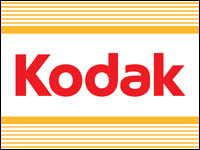
Amazon shares fell to their lowest point since late March after Goldman Sachs released a research note Thursday citing comScore data suggesting its holiday sales grew roughly 38 percent — 2 percent off analyst expectations of 40 percent.
The numbers imply fourth-quarter revenue of US$17.87 billion, below the current consensus of $18.19 billion, the note says, because for the past five years, Amazon’s year-over-year Q4 sales growth has outpaced holiday season growth in e-commerce by 23 percentage points on average.
ComScore reported a 15 percent rise in online holiday spending to a record $35 billion between Nov. 1 and Dec. 25.
Amazon has observed signs of some fluctuation in an unpredictable market. In October, the company projected that its Q4 results could range from a loss of $200 million to a profit of $250 million. In October, Amazon shares approached $250, but they have since dropped about 30 percent to around $173.
For the Kindle family of products, 2011 was the best holiday sales season ever, Amazon announced on Thursday. The company has never released hard sales numbers for its Kindle devices, but it has said that millions of Kindle Fire tablets and Kindle e-readers were sold.
Amazon did not respond to our request to comment for this story.
Goldman Sachs’ Conclusions
Since comScore did not single out Amazon, it is only through extrapolation that Goldman Sachs can identify weakness in Amazon’s sales.
“I don’t see it reflecting a fundamental Amazon problem so much as it indicates that generally weak online sales numbers inevitably impact the company,” Charles King, principal analyst at Pund-IT, told the E-Commerce Times. “Basically, it’s a lowering-tide-sinks-all-boats sort of story, but Amazon’s position as an online sales bellwether makes it vulnerable.”
Goldman Sachs took the comScore sales projection numbers and then calculated Amazon’s share using its historical growth rate, which is 23 percent higher than the ComScore average, King explained.
“To its credit, Goldman Sachs noted that comScore is just one data point, and that it doesn’t factor in overseas sales or individual company results,” he said.
You could see the tangible results of the firm’s assessment on Friday, King noted, as Amazon shares traded down more than 3 percent.
“Unless something believably contradicts the Goldman Sachs analysis, it wouldn’t be surprising if Amazon’s shares remain under pressure,” he said.
It’s unlikely that anything will change with Amazon in the short run, in King’s view. Even if Amazon does miss its projected revenue by a small fraction, it remains the biggest dog in the online retail kennel.
“There’s no company I know of that qualifies as a serious threat,” he said.
Amazon Expects Losses
Because it’s difficult to extrapolate Amazon’s numbers from the comScore analysis, it’s also possible that Amazon may actually meet its sales expectations. However, earnings will be a different story.
“I think it’s important to remember that Amazon itself predicted that it may lose up to $200 million in Q4 during its Q3 earnings announcement,” Carl Howe, vice president of data sciences research at the Yankee Group, told the E-Commerce Times.
“I think much of this may come from rush production of Kindles for the holidays,” he suggested.
Amazon has been perennially late getting manufacturing ramped up to holiday quantities for the devices it makes, Howe noted.
Amazon is seeding the market for future sales by selling devices such as the Kindle Fire below its cost, he said, “relying on post-purchase book sales to make up those losses in the future. Therefore, in a quarter where Amazon is selling lots of Kindles before those follow-on book sales happen, it’s likely to see operating losses.”
Amazon’s investment in the Kindle Fire is a big bet on future sales that may or may not happen. Just because Amazon sells a tool for buying doesn’t mean Kindle owners will buy sufficiently to cover its losses.
“This sell-at-a-loss-and-make-it-up-in-follow-on-buying strategy is very risky, because it assumes that future consumer purchases are predictable and significant,” said Howe.
Many other companies have tried this approach and failed when follow-on sales were lower than expected, he pointed out.
“I think Goldman is just noting the risk in that strategy,” Howe said. “Combined with Amazon’s stratospheric price-to-earnings ratio, [it’s something] that investors have to consider in owning Amazon stock.”











































Social Media
See all Social Media